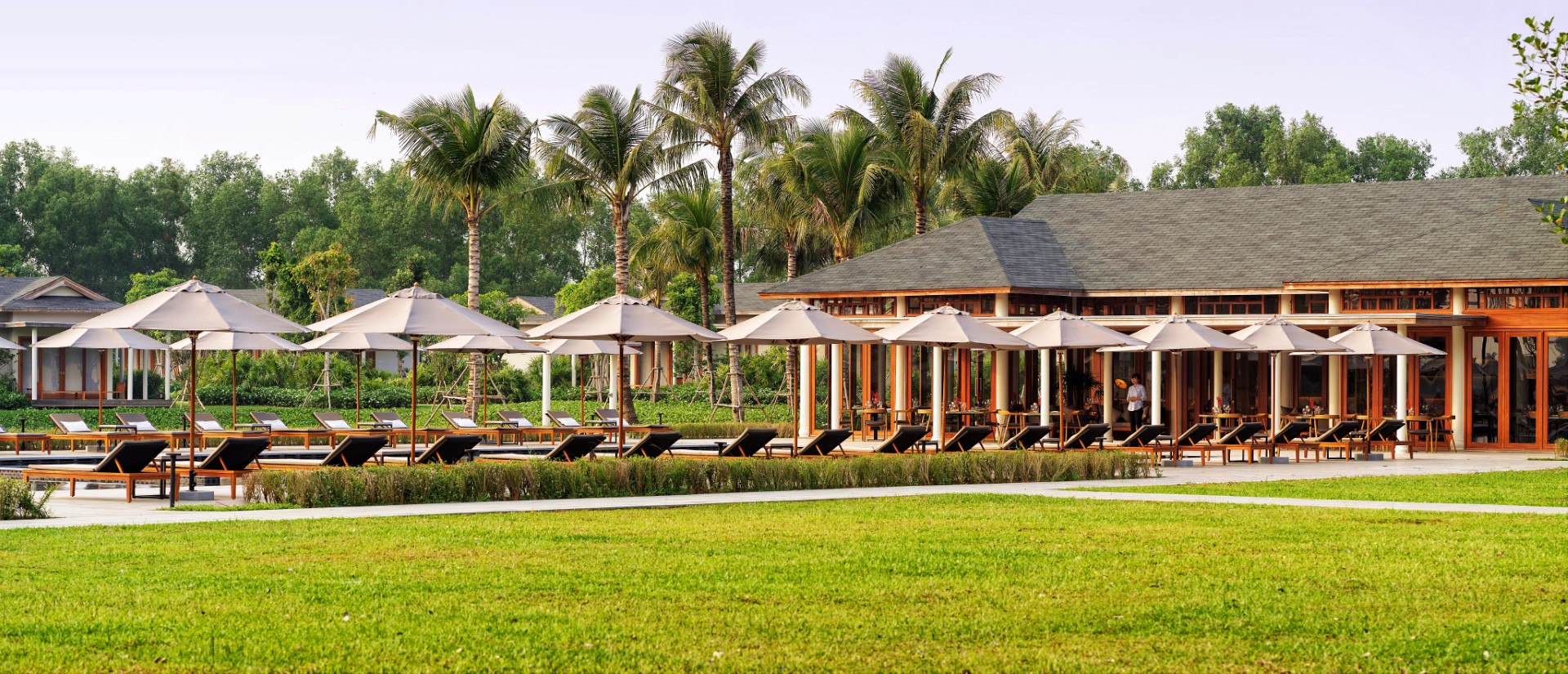My first trip to Vietnam five years ago was life-changing. Ho Chi Minh City’s pulsating energy, maddening traffic, staggering swarms of motorbikes, and delicious food simultaneously terrified and thrilled me. My week in the vibrant city slayed all of my preconceived stereotypes, and that experience was parlayed into an enduring love for the country. Since then, I have travelled to three other cities, falling deeper in love with every trip.
The abundance of new flight routes have inadvertently aided the rise of second-city travel. Defined as the exploration of a country’s lesser-known destinations in a bid to reduce overtourism, a report from Booking.com noted that 51% of travellers would swap their original destination for a similar alternative if it meant making less of an environmental impact. Travellers who have already checked off the classic must-visit cities are gladly embracing the trend thanks to the convenience of direct flights and the promise of total immersion into local culture minus the crowds.
An ardent fan of the road less travelled, I decided to explore Can Tho a couple of months ago. Pronounced as khun thuh, it is the largest city in the Mekong Delta, approximately 170 kilometres southwest of Ho Chi Minh City. Tourists have primarily chosen the country’s fourth largest city as a day-trip destination, but with the opening of an international airport in 2011 and AirAsia’s introduction of a direct route from Kuala Lumpur (a mere two-hour flight) in April 2019, access to the heart of the region is now easier than ever – or at least it will be once international travel restrictions are eased!
Azerai, The Crown Jewel of Can Tho
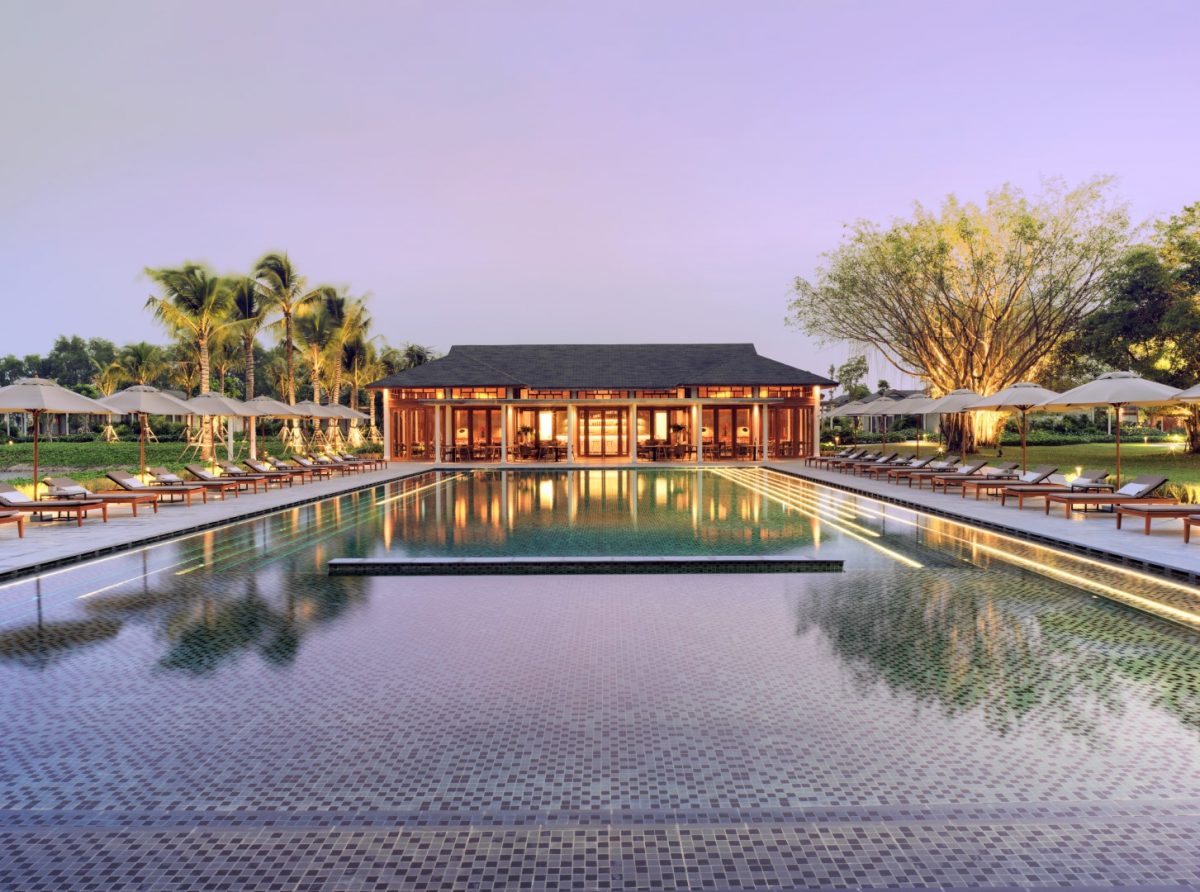
Seductively sedate and beautifully secluded on an islet accessible only by boat, Azerai Can Tho stretches across almost 10 hectares of modern beauty set by Hau River, complete with a lotus-flecked lake and dotted with banyan trees. Local touches were ubiquitous throughout the resort, reflected in its hospitality. For instance, the jasmine on the chilled towels handed to us at pick-up was picked from shrubs planted within the property; lamps shaped like traditional straw hats paid homage to the Vietnamese culture; bamboo latticework on the walls of the rooms were weaved by local artisans. At the heart of the resort, a glorious pool lined with shaded sun-loungers and daybeds separates The Café (main all-day dining restaurant) from the Lounge & Bar, seamlessly marrying traditional architecture with contemporary interpretation.
Fusing interior and exterior, constructed and natural, the resort is home to 60 rooms with views of the gardens, lake, or river. Our gorgeous room fronted the river, where afternoons were spent in quiet contemplation and evenings were reserved for watching straw-hatted fishermen gallantly manning their sampans. Replete with a bevy of curated activities to choose from, the sunset cruise is not-to-be-missed. It could have been the graceful meandering of the wooden ship along the Mekong, the humanness in reciprocating greetings from locals zooming by in their boats, or even the tantalising array of canapés and handcrafted cocktails, but as the fiery gold tint dissolved from our view, the day’s worries melted away with it.
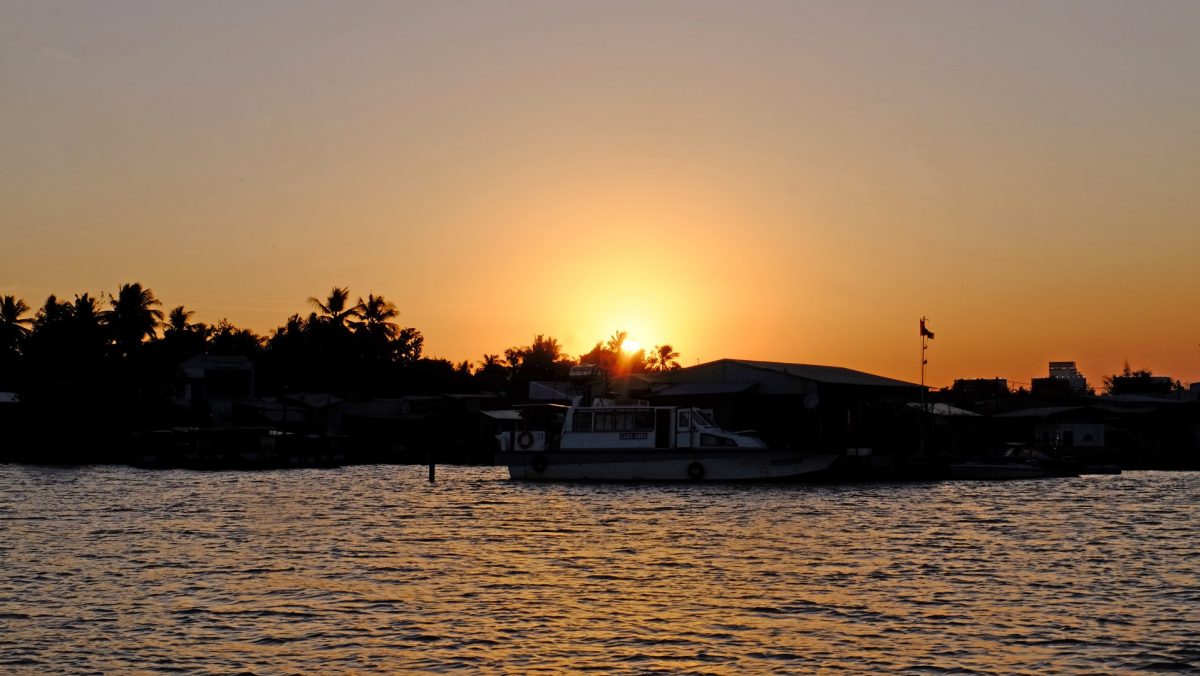
Putting sustainability at the forefront, dedicated solar panels power supply some 30-40% of the resort’s needs. Joining a host of other industry compadres, Azerai eschews the usage of miniature toiletries and single-use plastic, opting instead for sleek frosted bottles filled with Elemis products and refillable glass water bottles. When beverages were served, hollowed-out lemongrass stalks made for a compelling swap from plastic straws.
The Spa, meanwhile, is nestled beneath a canopy of banyan trees alongside the islet’s canal, with six treatment rooms and two treatment suites. The menu highlights a variety of Vietnamese offerings, including scrubs and body treatments that use local rice and almond oil, to name a few. However, it was the three different shower rooms that caught my attention, each with a distinct fitting to celebrate the water culture of the region: one equipped with a wooden bucket shower, another offered rainwater-style (nicknamed ‘the waterfall’), yet another with a gentle mist spray shower.
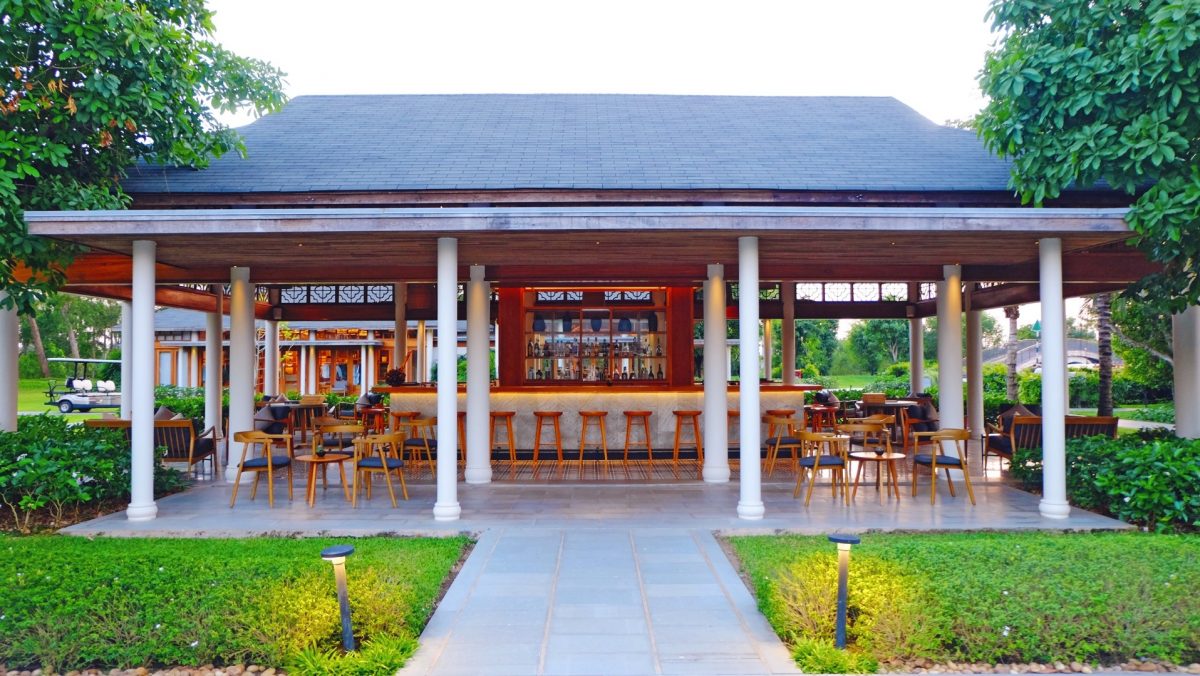
The decision to leave the premises and explore the quaint city was a tug of war between work and play that I was not prepared to have, which only seeks to reaffirm the resort’s undeniable charm and captivating hold on me.
Food That’s Approachable, Yet So Inspired
The food scene in the country really needs no introduction: Vietnam is haven for foodies. In the past two decades, the reputation of Vietnamese food on the world’s culinary stage has skyrocketed. From makeshift carts to tiny shops to five-star restaurants, the flavours and fundamentals of Vietnamese cuisine have delighted palates across the globe. Divided into three main regions (North, South, and Central), each region’s specialties are distinct but never disparate. In the South, the region’s fertile soil means a more liberal use of herbs in cooking. The diversity and contrast of Vietnamese cuisine –the raw and the cooked, the hot and the cold, the sweet and the sour – are tangibly tasted in Can Tho, where food leans towards the sweeter side.
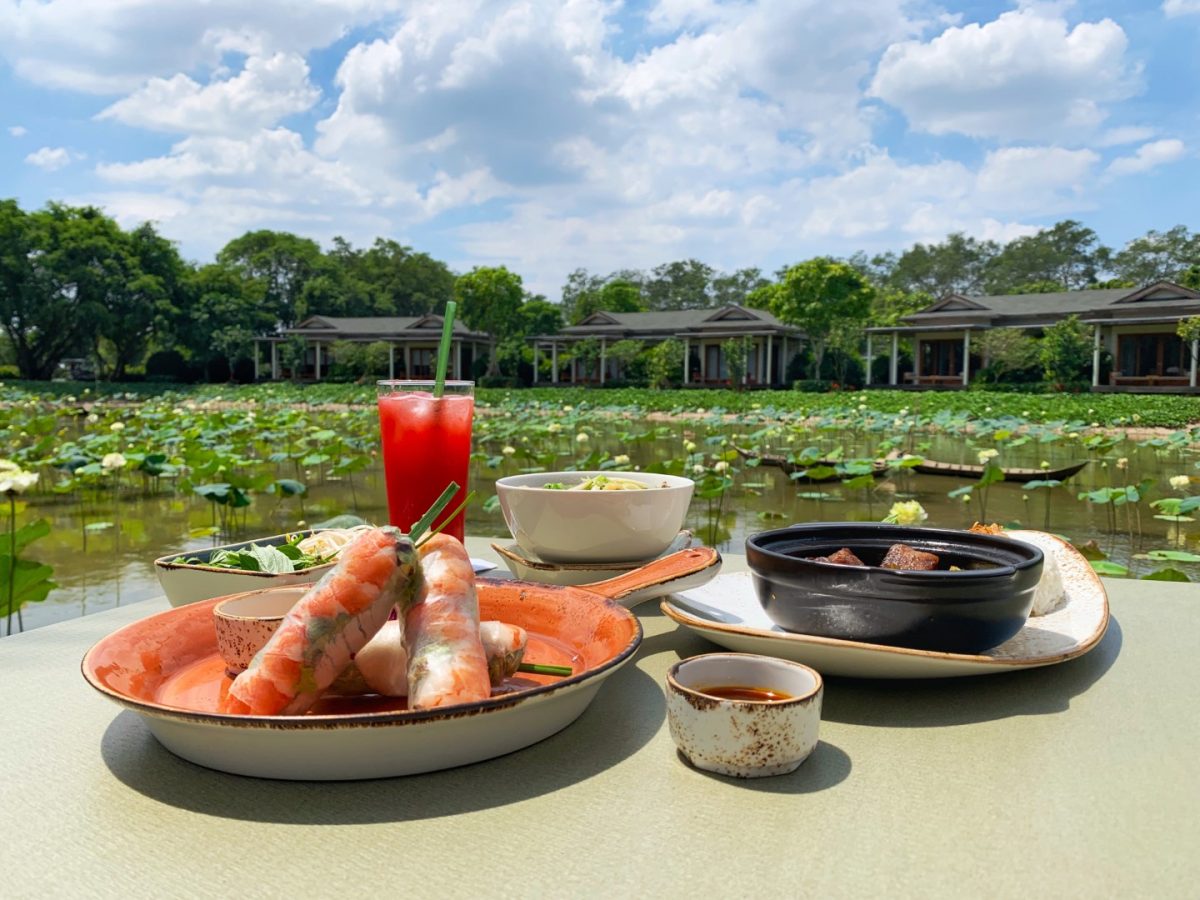
Our first meal in the bustling city was at The Café, Azerai Can Tho’s main restaurant, where we had a sublime introduction to one of the quintessential dishes of the South, Tôm Và Thịt Lợn Caramen (Caramelised Shrimp and Pork). The meat, simmered in caramelised brown sugar, was perfectly tender, and infused with the saltiness from the fish sauce and heat from the black pepper. The balance of flavours was flawless, so much so that we ordered the very same dish the next day. The star anise-scented broth of the Phở Bò (the South’s version is generally preferred) boasted of a richness that belies its clear soup, the umami flavour lingering on our taste buds long after we polished off every last drop.
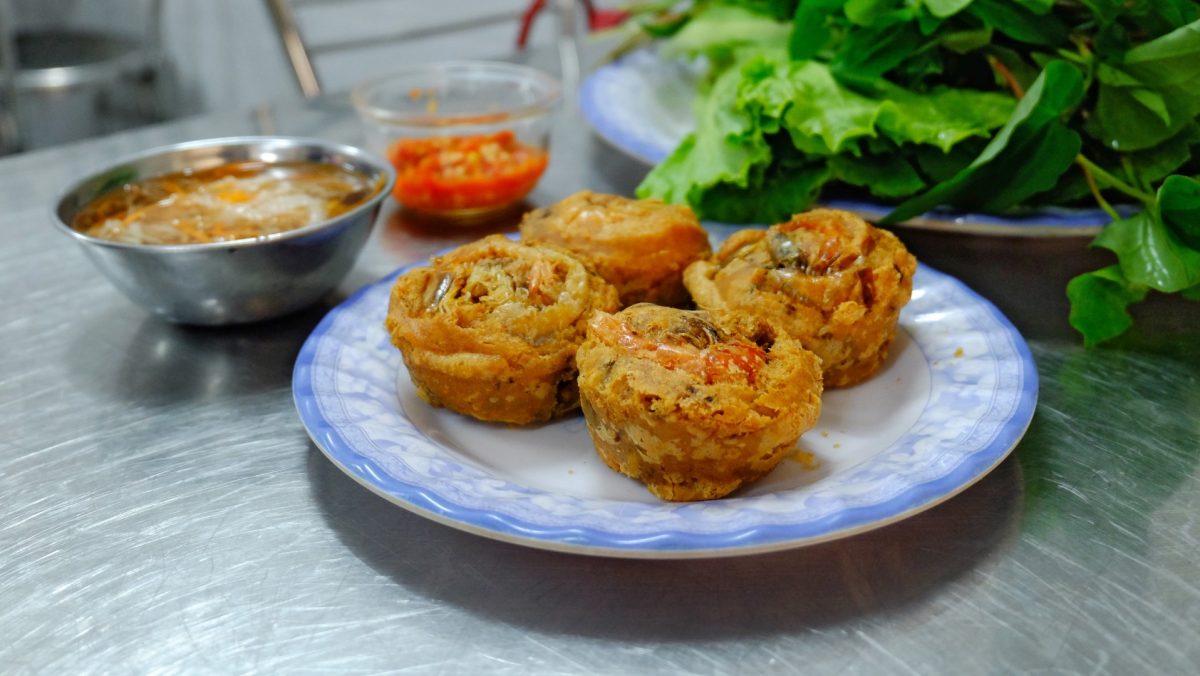
Eager to sample some street food, we ventured into the city and made a pit stop at Bánh Cống Cô Út (38 Lý Tự Trọng, Tân An, Ninh Kiều, Cần Thơ) for their famous Bánh Cống. Named after the device needed to make it (a Cong is a long-handled ladle with a cup-shaped bowl at the end), the crispy savoury cakes were made with mung beans, shredded taro, and whole shrimps. Each ingredient was diligently layered in the deep metal ladle and dipped in a batter before it was lowered into scalding-hot oil. The cakes arrived at our table piping hot with a pile of fresh greens and herbs, pickled radish, and pounded chilli paste on the side. We were advised to wrap the dense cakes with lettuce, with slivers of pickled radish and a smidgen of chilli paste as toppings. It turned out to be the best advice I received (in the food department) during the entire trip.
At Bánh Bèo Cô Tuyết (25/2B Trần Việt Châu, An Hoà, Ninh Kiều, Cần Thơ), the family-owned store essentially had two items on its menu: Bánh Bèo, rice cakes topped with mung bean paste, shrimp shreds, croutons, and spring onions; Bánh Bột Lọc, morsel-sized chewy tapioca dumplings with shrimp filling. Fish sauce and homemade chilli paste were must-have tableside accompaniments, both of which lent a savoury-spicy kick to the simple snacks.
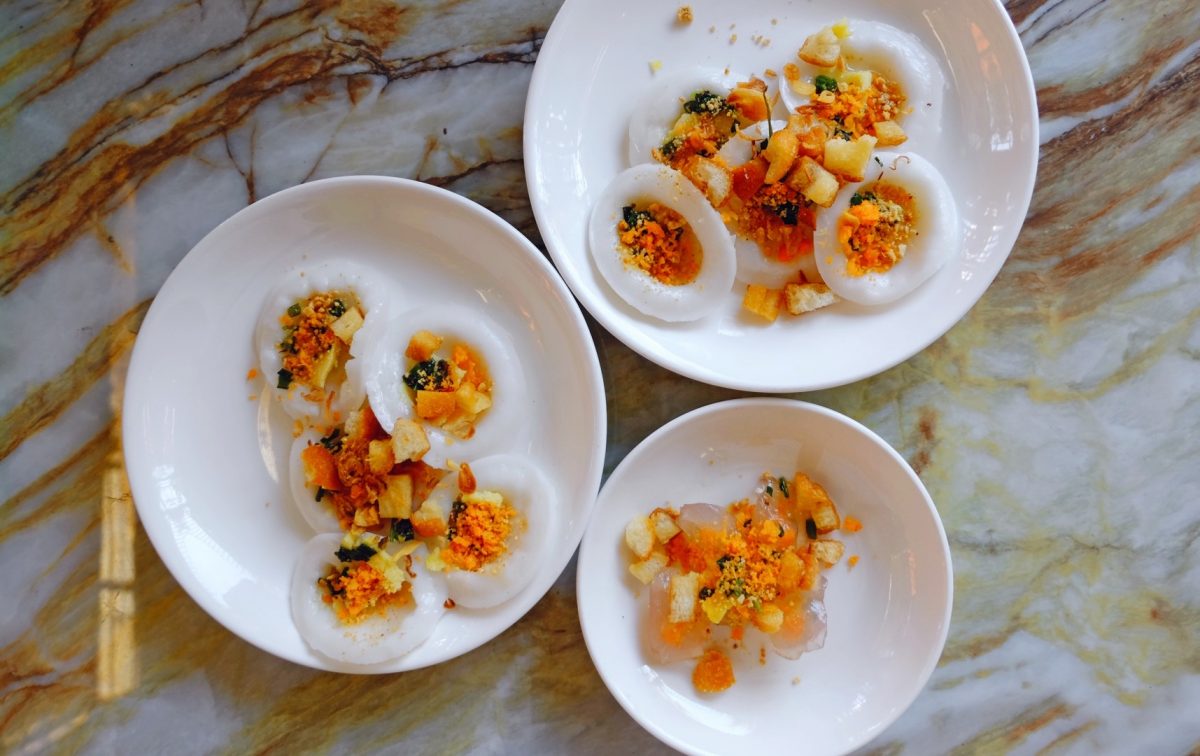
Déjà Vu (142 Huỳnh Cương, An Cư, Ninh Kiều, Cần Thơ), a cocktail and wine bar by Ninh Kieu Lake came highly recommended for good reason – their cocktails were wonderfully concocted, the bartenders friendly, the ambiance inviting. Here, conversations can flow late into the night without a need for raised voices and sore throats the morning after.
The Road Less Travelled
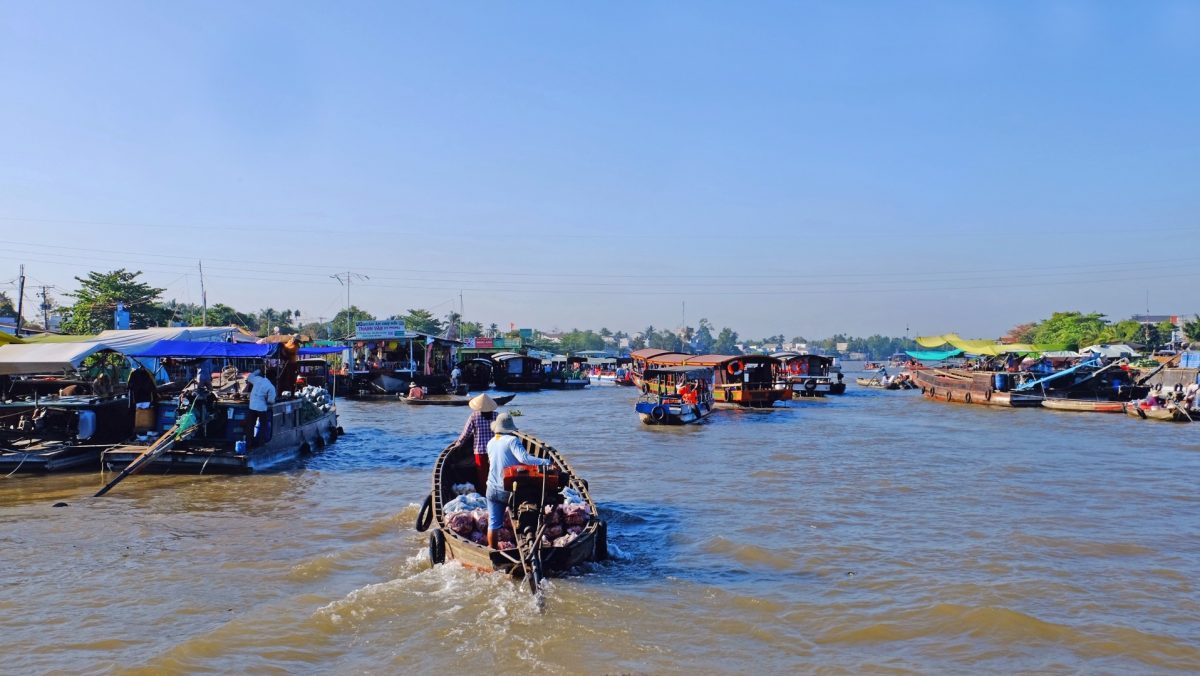
Strategically situated, exploring the Mekong Delta from Azerai Can Tho was a breeze. There were several options to visit the famed Cai Rang Floating Market, I was told. When we arrived at 9:30am, the market was buzzing with activity, a full-on working wholesale market with goods from deeper parts of the delta. Our tour guide, Luca, pointed out that each boat hosts its sample of goods – watermelon, pumpkin, pineapple, and more – identified by the item dangling from a long bamboo pole at the tip of the boat. With more markets burgeoning on land, the number of boats has significantly lessened.
An attraction for both film and history buffs, the ornate Binh Thuy Ancient House is a stunner inside and out. Built over a 40-year period (1870 to 1911) by wealthy merchant Duong Chan Ky, the home was famously featured in the 1992 film ‘The Lover’, based on the novel by French writer Marguerite Duras. Till this day, the interior of the house has been meticulously maintained, where hand-painted floor tiles, elaborate decorative wood carvings, and imposing floor-to-ceiling display cabinets remain.
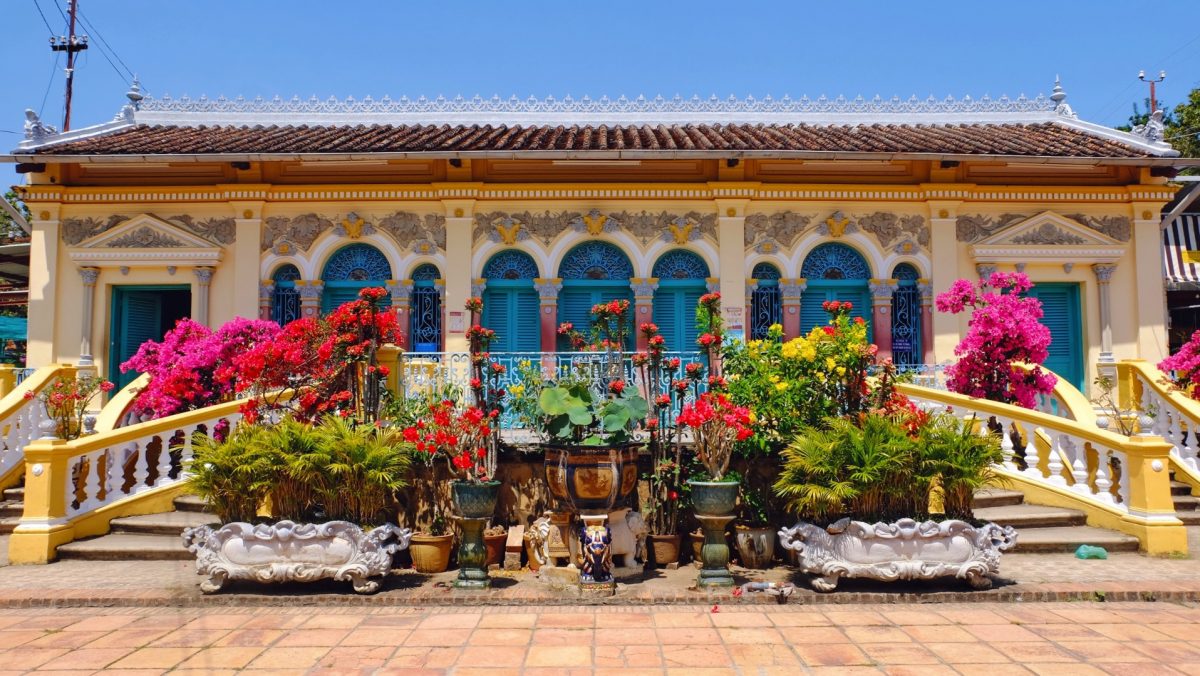
Located within the wharf’s area, the Ninh Kieu Night Market is a favoured spot for locals and tourists alike. Try the Banh Trang Nuong, Vietnamese pizza with rice paper as a base and an egg mixture with sriracha as toppings. Once cooked, the ‘dough’ was folded into half and served hot, best enjoyed on-the-go while we perused subsequent stalls for more local food and inexpensive souvenirs.
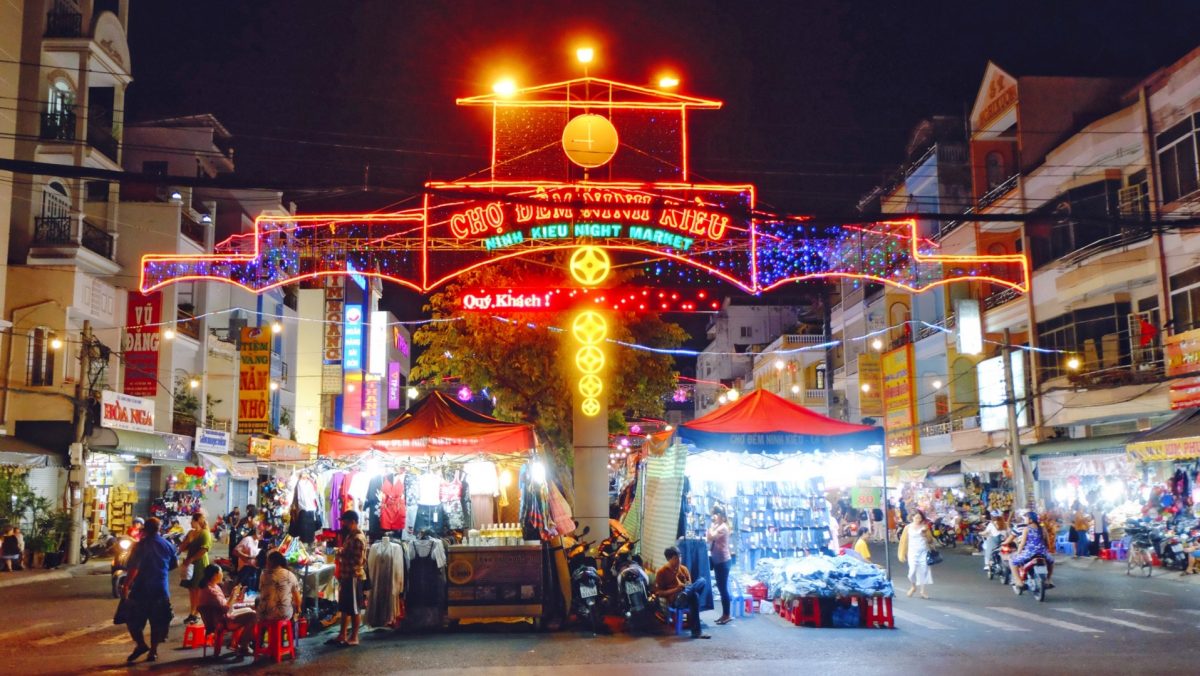
Paying a visit to Lo Hu Tieu (474C KV7, P. An Binh Q, Ninh Kieu, Can Tho) was a treat. The family-run business produces some of the best rice noodles in the city and has been doing so for the past 35 years. I watched as the owner, Chin Cua, deftly rolled a bamboo pin across the steamer and eased the semi-translucent sheet onto stacked mats nearby, which are then placed in the sun for about five hours (during summer) to dry.
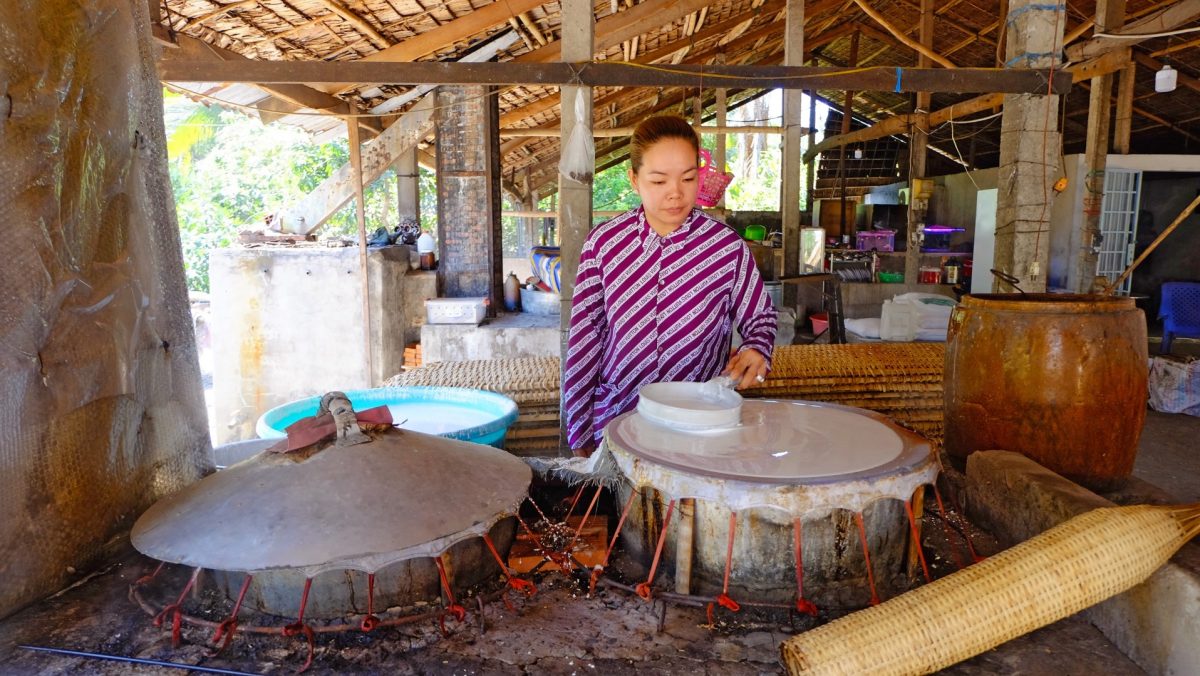
Once sufficiently dried, the sheets are shredded into thin, long strips and packed into 1kg portions for sale. Cua beckoned me to his side and handed me the pin, indicating that I should give it a go. As I began, one important caveat was given. “I have been doing this since I was a little boy; you need a bit more practice to master this,” he said with a twinkle in his eye.
"ExpatGo welcomes and encourages comments, input, and divergent opinions. However, we kindly request that you use suitable language in your comments, and refrain from any sort of personal attack, hate speech, or disparaging rhetoric. Comments not in line with this are subject to removal from the site. "


